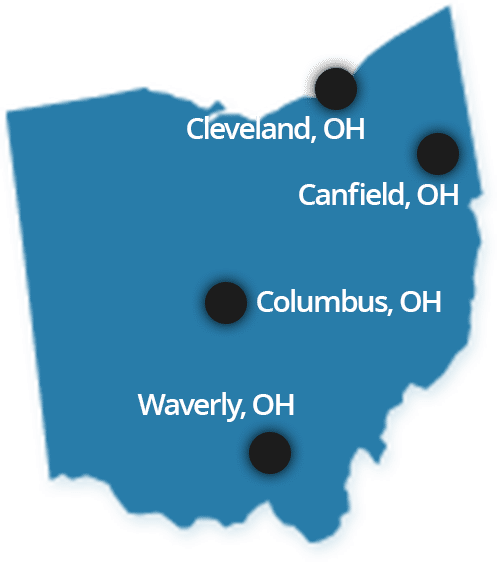In early August 2018, a jury in California awarded $289 million to a man named Lee Johnson, a former school groundskeeper who developed cancer after repeated exposure to the popular herbicide Roundup®. Johnson’s was one of about 8,000 Roundup lawsuits around the country filed against the manufacturer, Monsanto.
Numerous studies have linked Roundup to cancer—specifically, to non-Hodgkin lymphoma (NHL), a cancer of the body’s immune system that kills tens of thousands of Americans each year. These findings have led various governments and other organizations around the world to classify Roundup (or its key ingredient, glyphosate) as carcinogenic.
Understanding the risks of exposure to Roundup and the symptoms of non-Hodgkin lymphoma are critical first steps in protecting yourself against the herbicide’s danger or obtaining necessary medical care and legal compensation if that exposure leads to NHL.
Article at a Glance
- Roundup’s key ingredient, glyphosate, has been linked to numerous health problems, including non-Hodgkin lymphoma, a cancer that kills tens of thousands of Americans each year.
- Glyphosate has also been found in food products that were treated with the chemical before being harvested.
- If you’ve been injured by exposure to Roundup or other chemicals, the Ohio Product Liability Act lets you seek compensation from the manufacturer for your injuries.
What is Roundup?
Roundup is a popular herbicide that has been used by farmers and others since the 1970s to help control the spread of weeds. Roundup is a particularly potent herbicide, leading Monsanto to create genetically modified versions of farmers’ crops that can survive treatment with Roundup.
But numerous studies have shown that the key ingredient in Roundup, glyphosate, leads to an increased risk of NHL, either on its own or in combination with the secret, supposedly inactive other ingredients in Roundup.
Those findings have led government and other organizations to classify glyphosate as carcinogenic. For example, the World Health Organization’s specialized cancer agency in 2015 determined that glyphosate is “probably carcinogenic to humans.”
Glyphosate is also one of the chemicals targeted by California’s Proposition 65, which requires that it be labeled as a product “known to the State of California to cause cancer.”
And it isn’t just farmers and groundskeepers that need to be concerned with the health risks posed by glyphosate. In an analysis of 45 samples of non-organic food products made with oats (including popular breakfast cereals), the Environmental Working Group found 42 contained glyphosate, suggesting it was the result of the oats being sprayed just before harvest.
Symptoms of Non-Hodgkin Lymphoma
Lymphoma is a cancer of the lymphatic system, a key part of the body’s immune system that fights off disease and infections. NHL is a type of lymphoma that spreads throughout the lymph system randomly. There are multiple types of NHL, each of which must be treated in a different way.
Despite these differences, there are some common symptoms that may signal the development of NHL. Unfortunately, according to the Cancer Treatment Centers of America, these “symptoms tend to be fairly non-specific and may share similar characteristics with other illnesses.” Nonetheless, the organization lists the following common symptoms:
- Fever, night sweats, or chills;
- Swollen lymph nodes;
- Long-lasting fatigue, lethargy, or weakness;
- Lost appetite, nausea, or vomiting;
- Sudden weight loss;
- Abdominal pain or swelling or chest pain;
- Itchiness or rashes;
- Respiratory problems, such as coughing or difficulty breathing;
Many of these symptoms are also common in less serious illnesses, such as a cold. But when these symptoms manifest as a result of NHL, they last much longer than a cold would. If you have been suffering from symptoms like these for a matter of weeks or longer, seek medical attention as soon as possible.
What Does Ohio Law Say?
In Ohio, injuries caused by products (like Roundup or glyphosate) are governed by the Ohio Product Liability Act (OPLA). Under the OPLA, manufacturers of defective products can be held liable for any injuries caused by those products. The law defines four types of product defects that can give rise to OPLA liability:
- Design or formulation defects. In general, a product is defective in design or formulation if the risks associated with its design or formulation exceed the benefits associated with it;
- Manufacturing or construction defects. A product is defective in manufacture or construction if, when it left the manufacturer’s control, it deviated in a material way from the design or formulation or from otherwise identical units;
- Warning or instruction defects. A product is defective due to inadequate warning or instruction (also known as a marketing defect) if the manufacturer knows (or should know) of a risk associated with the product, that risk causes injury, and the manufacturer failed to warn about it;
- Nonconformity with manufacturer’s representations. If a product does not conform to how the manufacturer describes it, then it is defective.
The lawsuits targeting Roundup tend to allege two of these types of claims: Monsanto’s formula is defective because it is unreasonably dangerous to health in light of its benefits; and Monsanto failed to warn users of the risks associated with Roundup even though it has known about them for decades.
See also:

